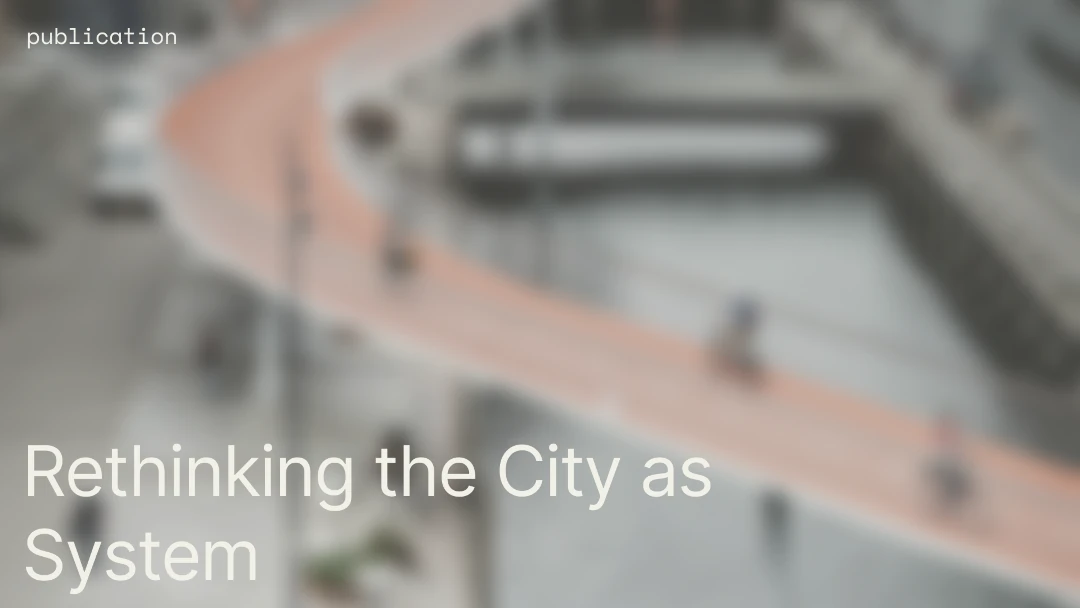
Bio
Paloma Gormley is one of the directors of Material Cultures, founded in 2019, alongside George Massoud and Summer Islam. She began her professional career in 2009 working very directly with materials, designing and constructing structures and small buildings together with Lettice Drake under the banner of Practice Architecture. Her work advocates for adaptation of alternative methods and materials, with a strong focus on education and collaboration. She’s been working on projects with Arup, Bauhaus Earth, ETH, and other institutions.
What drives you the most?
I think that my drivers have certainly changed over the years but they all have a similar root — of working through and with emergent, small c, cultures. A lot of the projects that Lettice and I did in the early days of Practice Architecture were about making social and cultural spaces . There was always an element of consciousness towards the materials and the sustainability within the work but it was never really articulated explicitly. We didn't have a language or a framework for talking about it, other than feeling responsible for what we did.
So it was only through establishing Material Cultures that this attention found its own voice and therefore formed a really strong directing force. At Material Cultures over the past 4 years we have moved from a technical, and scientific exploration of material into a more systemic, political and cultural understanding. It is through a systemic and cultural lens that we are now working to find new ways of thinking of practising that can supersede the modernist legacies that define how architecture is practised today.
Bridging the worlds of regenerative agriculture, land management, rehabilitation of our soils, and natural carbon systems is a necessary next step and the only way we can imagine architecture having a productive role in the future.
As someone who challenges these old and current legacies and systems on a daily basis, what do you consider to be the main barriers for pushing the sustainable agenda forward?
I think there are lots of barriers, but I do think they are all rooted in culture essentially. For the past 100 years we have been obsessed with the idea of progress, technology, and things that are finite and inflexible. Along with that there has been a devastating disregard for vernacular technology.
Entire knowledge systems have been lost in the pursuit of modernism. We are trying to find a way towards a different kind of value system — one rooted in care. There has to be a reciprocal relationship with both our landscapes and our built environment. Today we are living with the fictional idea that “The Contemporary World,” doesn't require that kind of intimacy of knowledge and looking after. But the reality is that it does and this contemporary system is now crumbling with rusting rebar and disintegrating cladding systems. A lot of this culture is manifested in this capitalist, individualist, and patriarchal mindset.
With a sustainability or a "counter carbon" agenda comes a very different kind of palette of materials required to solve this problem. We have to start looking towards other solutions, such as straw and timber. Actually, primarily straw, as we can not afford to use timber intensively in the long run.
It feels like inherently these solutions offer up a different way of thinking, building, maintaining, and caring for our buildings and that's a real opportunity for a broader cultural shift. It is a necessary part of the transition — the realisation that we can't do things in this kind of industrialised and mechanised way anymore. We need to be more nuanced and responsive towards our ecosystem.
There are also the more evident, immediate barriers like the lack of investment in biobased technologies. Given that so far energy and carbon-heavy technologies have been prioritised, there is a huge amount of catching up needed to do. There is a lack of skills and knowledge.
Another important aspect is that the construction industry is inherently risk averse. The bureaucratic systems and certification that binds construction have grown alongside this oil-based industrialised culture and therefore need to be separated from one another or be rebuilt for change to happen. The list of barriers is long and some of them are deeply rooted in the industry.
You talk about the need for creation of new value systems — how do we move the industry toward more bio-based and regenerative materials and practices?
It needs to happen on every scale and at each point along the supply chain and it needs to come from the top down and the bottom up, simultaneously.
There's a lot to be done in terms of regulation: regulate carbon emissions, including upfront carbon, and promote circularity. At the same time, we need to understand the architectural language that will come from that change.There needs to be a shift in expectations and perceptions around these materials and an acknowledgement that in many instances they greatly outperform the contemporary materials that we are used to.
A huge amount of work needs to happen along the supply chain, and when working with biobased materials bridging architecture into agriculture suddenly becomes very important. We need to understand the regeneration of landscapes and be mindful of what can be responsibly extracted and harvested from that landscape in its regenerative state. We need to understand what kinds of supply chains might exist in the future and which resources are viable and can be turned into materials and systems.
The climate scientist Hans Joachim Schellnhuber talks about how using timber in construction functions as a carbon pump, pulling carbon from the atmosphere and storing it in buildings. If bio-based construction were to be implemented at scale then this would represent a globally significant carbon store capable of reducing global heating. However, once you apply the amount of industrialised forestry required to deliver this vision and look at this in relation to the land mass required for the production of food and housing it quickly becomes completely unviable. There is no world in which we can cultivate that much timber without causing immense ecological harm.
Straw however is generally a secondary crop that comes from the production of grain and unlike timber with a minimum of 20 years crop cycle grain crops can be harvested annually or even biannually. Depending on the crop they can also sequester large amounts of carbon. This is why we are so excited about straw. We think Schellnhuber’s theory stands but we just need to substitute as much timber as possible for straw or other fast growing plant matter and avoid over use of timber that is inherent in mass timber systems.
In terms of scaling change across the supply chain, what role does data and LCA have in this? Are they something to leverage? Or do you think it can also become a hindrance in some way, if new systems are compared to current standards?
I think yes, within the paradigm that we currently exist in with industrialised standardisation — data is one of the best tools that we have, at least in terms of crude impact. In terms of building new systems that have the sensitivity required to be good custodians — this methodology is not useful at all. We need to be working in much more subtle, nuanced and connected ways. And It's a real question for us at the moment, which paradigm we are operating under or where we're best placed in these two trajectories. And it's difficult when everything feels so urgent.
We are dealing with the problem of a kind of codified and data-driven world that inherently cannot capture the incredible complexity of the entire system. What we advocate for is a much smaller, scale and more responsive approach, where you might have different kinds of codes and regulations that are developed by a specific region in response to its geological and ecological need and based on that develop a material and logic in terms of supply chain, knowledge and network.
If you can imagine what the built environment should look like in 2030, what would it be?
In 2030 the specification of bio-based and low carbon materials should be completely standard across all types of construction. An international retrofit programme would upgrade all existing buildings with plant based or bio-regionally appropriate insulation to resist high and low temperatures and massively reduce energy consumption.
All new buildings would be constructed from bio-regionally sourced materials, responding to regional practices and working within local codes. Landscape reform movements would have achieved the redistribution of land for the production of crops in regenerative and agro-ecologically managed systems.
What is your advice for those who strive to change the industry for the better?
Complex bureaucracies and supply chains have removed us from a relationship between architecture and the realities of extraction. Seek to understand the real impact of the work that we do and advocate for practices that offer hope.




























